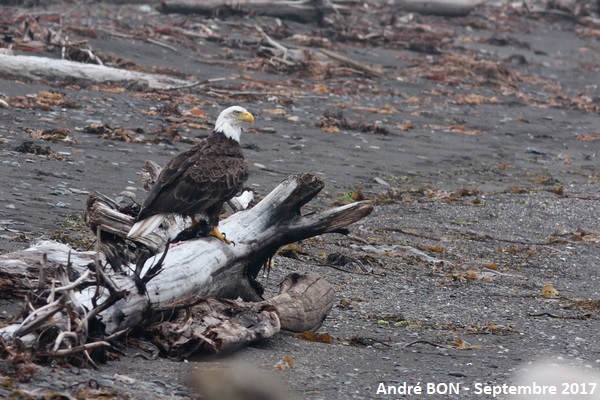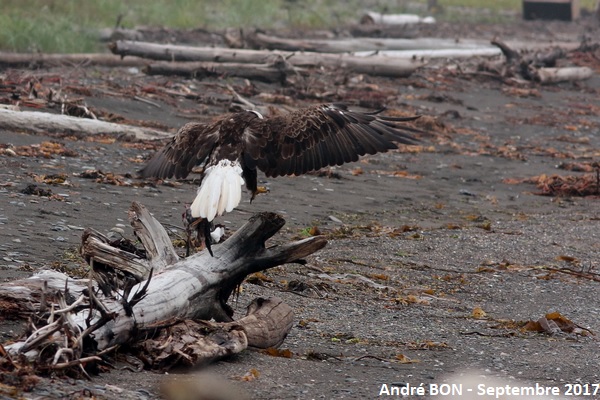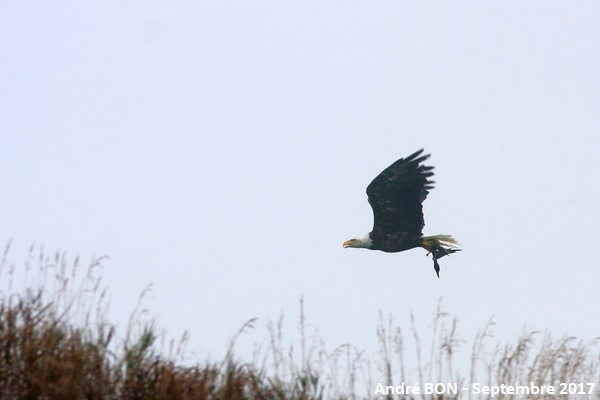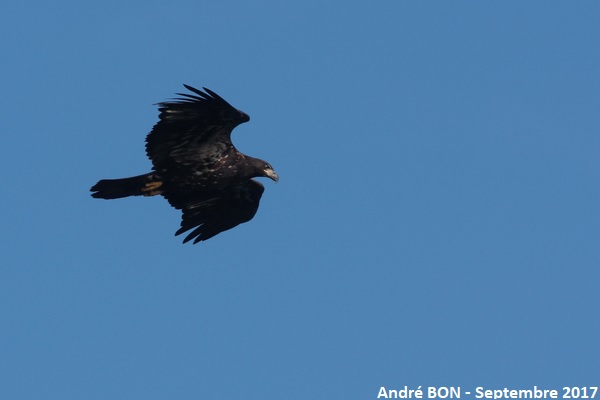




| Bald Eagle (Haliaeetus leucocephalus (Linnaeus, 1766)) |





|
|
Scientific name: Haliaeetus leucocephalus (Linnaeus, 1766) Common name: Bald Eagle French name: Pygargue à tête blanche Order: Accipitriformes Family: Accipitridae Size: Sexual dimorphism only concerns size, females are 25% larger than males. Size also varies by region, northern birds are larger than those in the southern range. Body size: 70 to 100 cm; Weight: 3 to 7 kg; Wingspan: 180 to 240 cm. Habitat: Shores of oceans, banks of rivers and shores of large bodies of water with proximity to old trees providing perches with good visibility and nesting possibilities. Food: Mainly fishes but also aquatic birds and mammals. Nesting: Bald Eagles generally return to their birthplace to breed. The nest, made of branches, is very bulky and is reused from year to year. There are 1 to 3 eggs per clutch. Migration: Northern birds move southwards in winter. Geographic area: North America, from southern Mexico to northern Alaska. |
The Bald Eagle has a white head and neck. The underside of the wings and the tail are creamy white. The rest of the plumage is dark brown to blackish. The bill and tarsi are yellow. The claws are black. Juveniles are brown with a few white spots until they are 4 or 5 years old. The flight is slow with wings wide open. |
| [To know more about the Bald Eagle] [Next picture] [Top] |

|
The walk by the sea to see the waders was enhanced by a nice sighting of a Bald Eagle. |
| [To know more about the Bald Eagle] [Next picture] [Previous picture] [Top] |

|
Who are these intruders who come to disturb me? |
| [To know more about the Bald Eagle] [Next picture] [Previous picture] [Top] |

|
When taking off, we can see that the Bald Eagle is carrying a prey in its claws. |
| [To know more about the Bald Eagle] [Next picture] [Previous picture] [Top] |

|
It is likely that the prey is a Common Merganser. I remember having seen a large number of them a little further on. |
| [To know more about the Bald Eagle] [Previous picture] [Top] |

|
This juvenile Bald Eagle passed several times over our head while we visited the "bout du monde". |